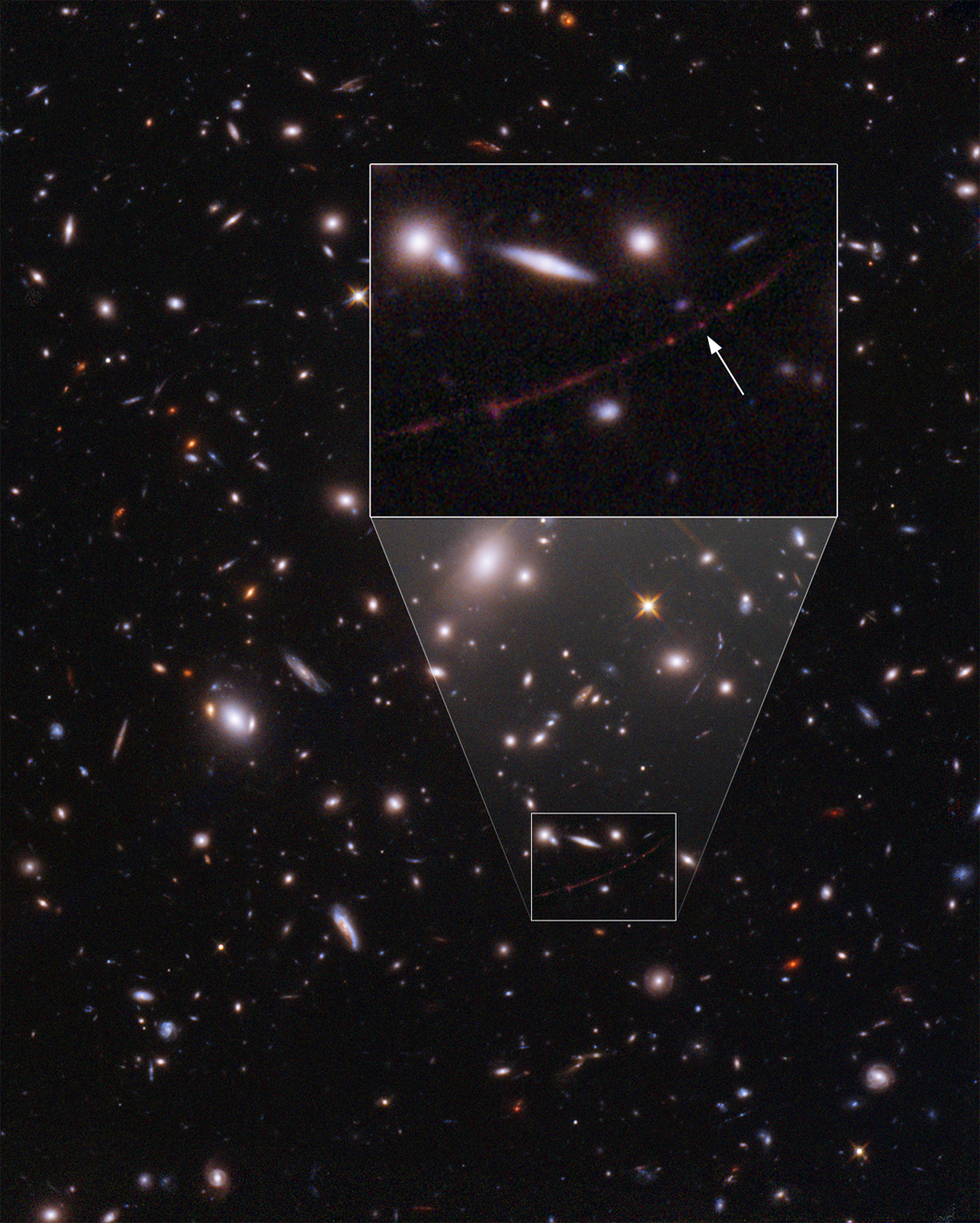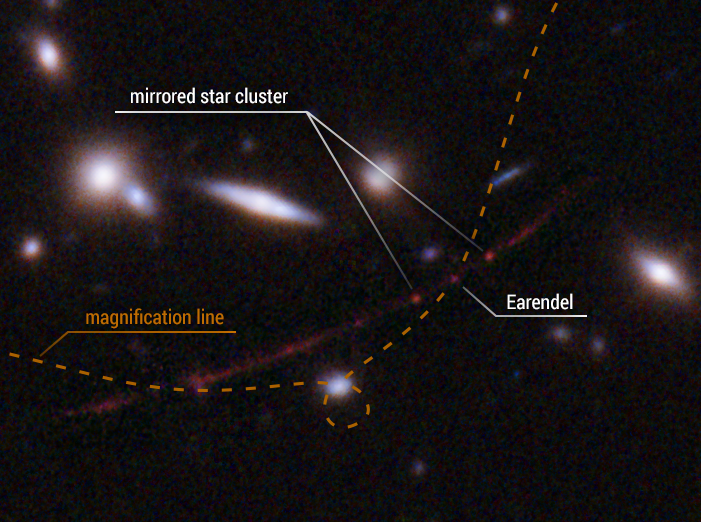The most distant star ever seen
The Hubble space telescope sets a new record by capturing the light from a star that shone in the first billion years after the Big Bang. The Institute of Astrophysics of Andalusia (IAA-CSIC) is involved in the discovery, which provides a detailed view of the dawn of the universe
NASA's Hubble Space Telescope has set a new milestone by capturing the light from the most distant star ever seen. Named Earendel, the star is so far away that its light has taken 12.9 billion years to reach Earth, so we observe it as it was when the universe was only 7% of its current age. The discovery, involving the Institute of Astrophysics of Andalusia (IAA-CSIC) and published today in the journal Nature, is a huge leap back in time from the previous record -a star that lived some nine billon years ago- and provides a unique insight into the dawn of the Universe.

“We almost didn't believe it at first", says Brian Welch, a researcher at Johns Hopkins University and lead author of the paper. Normally at these distances, entire galaxies look like small smudges, but this galaxy has been magnified and distorted by gravitational lensing into a longcrescent named the ‘Sunrise Arc’”. While studying this galaxy in detail, the science team observed an extremely magnified star that they named Earendel, which means "morning star" in Old English.
Gravitational lensing is a common effect in the Universe that occurs when matter in a cluster of galaxies, mostly dark matter, bends the light rays from background galaxies and acts like a magnifying lens or magnifying glass. In this case, it is the galaxy cluster WHL0137-08, located between us and Earendel, which greatly distorts and amplifies its light.
If Earendel is a single star and not a double system, the team estimates that it would have at least fifty times the mass of our Sun and millions of times its brightness, placing it among the most massive stars known. The discovery, made possible by data from the Hubble Space Telescope's RELICS (Reionization Lensing Cluster Survey) programme, promises to open up an unexplored era of very early star formation.
A LUCKY ALIGNMENT
Thanks to the rare alignment with the lensing galaxy cluster, the star Earendel appears extremely close to a ripple in the fabric of space. This ripple, known in optics as caustic, provides maximum magnification. The effect is analogous to the rippled surface of a swimming pool, which creates bright light patterns on the bottom of the pool on a sunny day. The ripples on the surface act as lenses and focus the sunlight for maximum brightness at the bottom of the pool. In the case of Earendel, the caustic make the star stand out from the general glow of its host galaxy and its brightness is magnified by a factor of thousands.

"To predict whether Earendel's magnification and brightness will remain stable in the coming years or if it is a temporary phenomenon, we needed to estimate the mass of all the stars that lie in the line of sight between us and Earendel. These stars are those in the wings of galaxies close to Earendel, plus those that do not belong to any galaxy and make up what is known as intracumulus light. This is specifically the contribution that we at the IAA have made to this discovery", says Yolanda Jiménez Teja, a researcher at the IAA-CSIC who is participating in the study.
Since the data suggest that Earendel will remain magnified for years to come, the team plans to study this star with the James Webb Space Telescope (NASA), which will be operational in the coming months. “With Webb we hope to confirm that Earendel is indeed a star and measure its brightness and temperature, which will tell us its type and the stage of the stellar life cycle it is in –says Dan Coe, a researcher at the Space Telescope Science Institute (STScI) and coordinator of the RELICS programme involved in the work–. We also expect to find that the region lacks the heavy elements that formed in subsequent generations of stars, which would suggest that Earendel is a rare metal-poor massive star”.
B. Welch et al. "A highly magnified star at redshift 6.2". Nature, March 31, 2022.
Instituto de Astrofísica de Andalucía (IAA-CSIC)
Unidad de Divulgación y Comunicación
Silbia López de Lacalle - sll[arroba]iaa.es - 958230676
https://www.iaa.csic.es
https://divulgacion.iaa.csic.es

